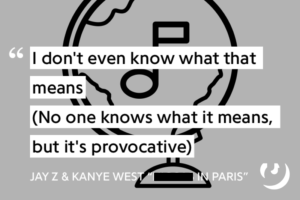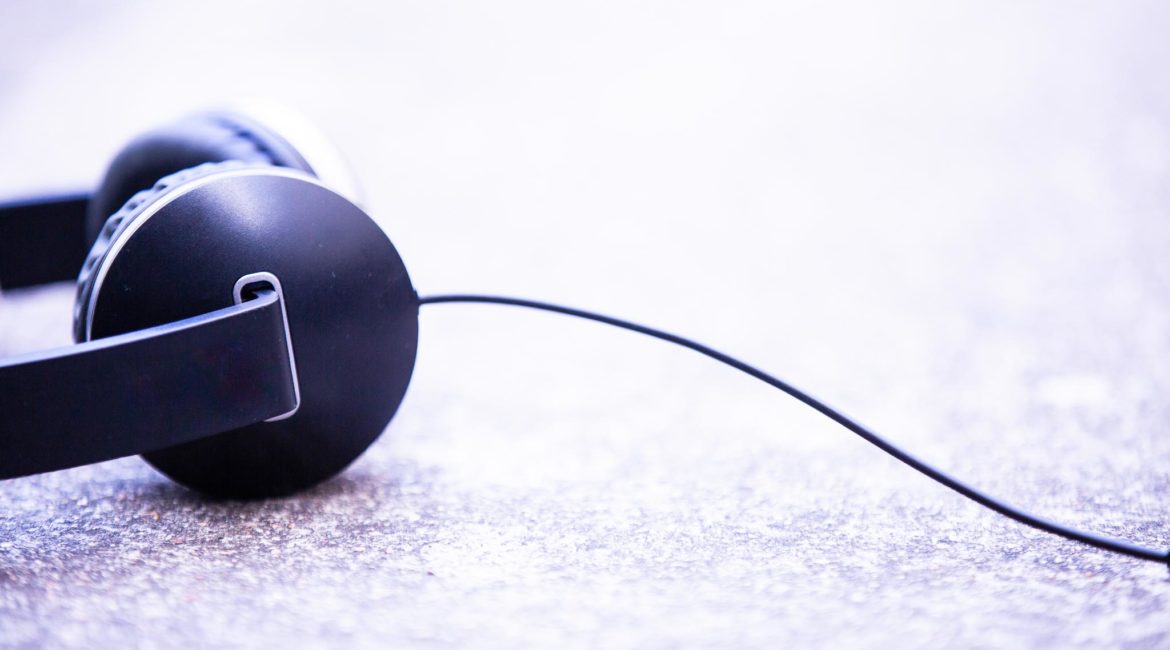
In Carolyn Miller’s foundational text in Rhetorical Genre Studies, “Genre as Social Action,” (1984) she asserts the utility in studying “homely discourses.” Examining the quotidian genres we interact with on a daily basis does not “trivialize the study of genres,” Miller states, but it actually “take[s] seriously the rhetoric in which we find ourselves immersed.”
This assignment encourages students to take seriously the rhetorical considerations of a non-literary genre that they often encounter: popular music. Music critic and historian David Hajdu confesses in Love for Sale: Pop Music in America that “popular music” is “the least useful phrase I know,” elaborating:
“It provides no information about the music itself: no suggestion of how it sounds or what sort of mood it might conjure, no indication of the traditions it grows from or defies, and no hint of whether it could be good for dancing, for solitary listening, or for anything else. All the term tells you about the music is the fact, or the assertion, that it’s popular.”
Here, students will approach this “useless,” “homely” genre with the intent of discovering its rhetorical usefulness — and picking up the digital skills of writing about/with sound along the way.
Learning Objectives
This assignment aims to engage students in linking two processes: both the process of rhetorically listening to sound and the process of rhetorically composing with sound. Working in groups, students will produce podcasts via GarageBand/Audacity that revolve around presenting and discussing a handful of popular songs and their apparent genres.
Furthermore, this assignment encourages students to think about writing and literacy dynamically as they analyze and compare the different techniques, forms, and situations that compose different songs and genres within popular music. Put simply,
- Write and think about/with/through sound
- Engage in rhetorical genre analysis
Required Materials
Recording Software, Recording Equipment, Access to MP3s
Skills Necessary
Audio recording and editing
Access and Adaptability
In the process of composing their audio podcasts, students should simultaneously compose and deliver a written transcript.
Assignment Description
Students will divide into groups and sign-up for a selection of pop songs to analyze. There are a number of interesting ways to decide what particular songs to assign. I recommend visiting Billboard’s online charts and creating work groups to study popular music either diachronically or synchronically as a class. A diachronic study would entail each group analyzing the top 3-5 songs from a different era. In this approach, one group could study the current most popular songs as measured by Billboard, and the rest could look at the same date 10 years in the past, 20 years in the past, and so on depending on the number of groups. A synchronic study would entail each group analyzing the same era, but across different genre charts on Billboard’s website: for instance, one group could study the top 3-5 Hip-Hop/Rap songs, one group could study the top 3-5 Alternative songs, and so on.
Then, individually and in their groups, students listen to their assigned songs and think analytically about their construction. This doesn’t require sophisticated knowledge of music theory (i.e. identifying chord progressions, etc.), but more basic observations about the songs’ form, content, and context: for instance, the songs’ instrumentation, length, tempo, lyrical form/content, verse/chorus/bridge structures, author(s), audience(s), etc. Students should orient these observations towards questioning what the term ‘popular music’ can tell us about the music that operates under that name — and maybe even what the terms for the more specific genres housed within it can tell us as well.
Ultimately, they will ground their observation and analysis in composing their audio podcasts. By writing with sound in audio production programs such as GarageBand/Audacity, students will be able to incorporate audio quotation into their projects: structuring their rhetorical discussion around the arranging/editing of song clips.
Instructor Preparation
- Schedule DWRL workshop
- Assemble song selections
- Rent a DWRL recording space
Student Preparation
- Watch DWRL video tutorials
- Read “Musicking” by Christopher Small
The DWRL is equipped with an array of resources to help implement this digitally-oriented lesson plan.
Instructors can utilize the DWRL’s hardware library by encouraging their students to check-out equipment pertinent to their project. By visiting the DWRL office in FAC 8, students can check-out recording equipment for use outside of class such as portable microphones and monitoring headphones.
Instructors can also schedule a workshop and request a room. By scheduling a workshop, a DWRL staff member can visit a class and engage students in a lesson oriented toward a specific digital workstation: such as GarageBand or Audacity. By requesting a room, instructors can schedule a time for their class to utilize a DWRL recording space as an optimal acoustic environment.
Also, instructors can direct their students to the video tutorials embedded in this lesson plan and on the DWRL Youtube page, where an overview of some basic digital skills — such as audio editing and arranging techniques — are provided.
Suggestions for Assessment
The process of producing an audio project can call for regular feedback and assessment. The instructor would be wise to schedule in feedback and assessment at each of the project’s stages: the planning, recording, and editing/arranging stage. Any class time set aside for workshops or recording time can be incorporated into an ongoing participation grade. Otherwise, the project can be assessed with the same weight of a traditional group project.






